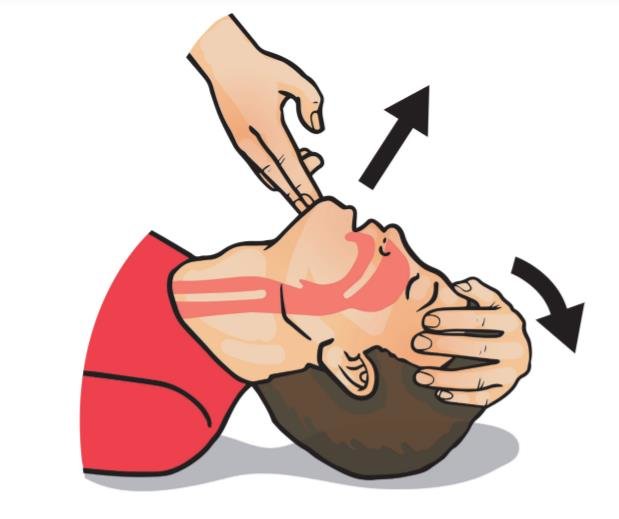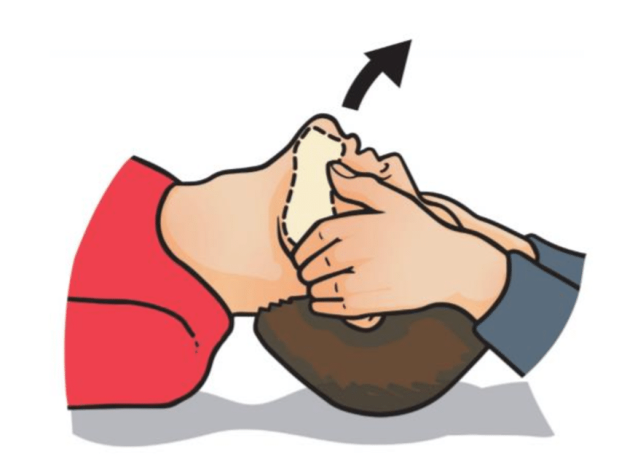3.1 Two-Rescuer CPR
When two trained rescuers are available, the workload can be shared to reduce fatigue and improve efficiency. This allows for higher-quality CPR and a more coordinated resuscitation effort.
Key Benefits of Two-Rescuer CPR
- Minimizes rescuer fatigue, ensuring consistent chest compression quality.
- Allows one rescuer to focus on compressions while the other manages the airway.
- Ensures faster AED use and smoother transitions between tasks.
Role Assignments in Two-Rescuer CPR
Rescuer 1: Chest Compressions
- Positions themselves at the patient’s side.
- Delivers high-quality compressions at 100–120 per minute.
- Compresses to the correct depth:
- Adults: At least 2 inches (5 cm).
- Children: At least 1/3 of the chest diameter (~2 inches or 5 cm).
- Infants: At least 1/3 of the chest diameter (~1.5 inches or 4 cm).
- Ensures full chest recoil between compressions.
- Minimizes interruptions, switching roles every 2 minutes or 5 cycles to prevent fatigue.
Rescuer 2: Airway & Ventilation
- Positions themselves at the patient’s head.
- Maintains an open airway using:
-
Head Tilt-Chin Lift:
If no suspected spinal injury.×Head Tilt-Chin Lift:
 © FAW Training Solutions – All rights reserved
© FAW Training Solutions – All rights reserved -
Jaw Thrust Maneuver:
If spinal injury is suspected.×Jaw Thrust Maneuver:
 © FAW Training Solutions – All rights reserved
© FAW Training Solutions – All rights reserved
-
Head Tilt-Chin Lift:
- Uses a bag-mask device (BVM) to provide breaths.
- Delivers breaths at the correct rate:
- Adults: 1 breath every 5–6 seconds (~10–12 breaths per minute).
- Children & Infants: 1 breath every 3–5 seconds (~12–20 breaths per minute).
- Ensures each breath lasts 1 second and results in visible chest rise.
- Prepares the AED and applies pads while Rescuer 1 continues compressions.
| Task | Rescuer 1 (Chest Compressions) |
Rescuer 2 (Airway & Ventilation) |
|---|---|---|
| Position | Side of the patient | At the patient’s head |
| Responsibility | Deliver high-quality chest compressions | Manage airway and provide rescue breaths |
| Compression Rate | 100–120 compressions/minute | N/A |
| Compression Depth |
Adults: ≥ 2 in (5 cm) Children: ≥ 1/3 chest diameter (~2 in) Infants: ≥ 1/3 chest diameter (~1.5 in) |
N/A |
| Chest Recoil | Allow full recoil between compressions | N/A |
| Role Switching | Switch every 2 minutes or after 5 cycles (30:2) to reduce fatigue | |
| Airway Maneuvers | N/A |
Head Tilt-Chin Lift (no spine injury) Jaw Thrust (if spinal injury suspected) |
| Ventilation Rate | N/A |
Adults: 1 breath every 5–6 sec Children & Infants: 1 breath every 3–5 sec |
| Breath Quality | N/A | Each breath lasts 1 second and causes visible chest rise |
| AED | Continue compressions while AED is prepared | Prepares and applies AED pads during compressions |
Compression-to-Ventilation Ratios in Two-Rescuer CPR
- Adults: 30 compressions to 2 breaths (30:2) — same as single-rescuer CPR.
- Children & Infants: 15 compressions to 2 breaths (15:2) — increased ventilation support for pediatric patients.
Key Considerations for Effective Two-Rescuer CPR
- Rescuers must communicate clearly to ensure smooth role changes.
- Minimize hands-off time by switching roles quickly and efficiently.
- The AED should be applied as soon as possible to allow for early defibrillation if needed.
- Use the two-thumb encircling technique for infant compressions when possible for better control and depth.
Two-rescuer CPR significantly improves the quality of resuscitation by reducing rescuer fatigue, ensuring better compressions, and allowing for more efficient airway management. Next, we’ll cover how to smoothly switch roles without losing valuable time.